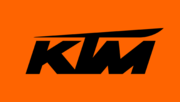Honda Fourtrax Foreman TRX500FE1 (2019) Manual
Læs nedenfor 📖 manual på dansk for Honda Fourtrax Foreman TRX500FE1 (2019) (263 sider) i kategorien Motor. Denne guide var nyttig for 57 personer og blev bedømt med 4.5 stjerner i gennemsnit af 2 brugere
Side 1/263

TRX500FE1/FE2
FOURTRAX
FOREMAN
Part Number
Produkt Specifikationer
| Mærke: | Honda |
| Kategori: | Motor |
| Model: | Fourtrax Foreman TRX500FE1 (2019) |
Har du brug for hjælp?
Hvis du har brug for hjælp til Honda Fourtrax Foreman TRX500FE1 (2019) stil et spørgsmål nedenfor, og andre brugere vil svare dig
Motor Honda Manualer

8 Januar 2025

8 Januar 2025

2 Januar 2025

31 December 2025

31 December 2025

31 December 2025

14 December 2024

13 Oktober 2024

3 Oktober 2024

3 Oktober 2024
Motor Manualer
- Motor BMW
- Motor Juki
- Motor Husqvarna
- Motor Aprilia
- Motor Mercedes-Benz
- Motor Triumph
- Motor Mitsubishi
- Motor Yamaha
- Motor Kettler
- Motor Texas
- Motor Reebok
- Motor Suzuki
- Motor Emco
- Motor Piaggio
- Motor KTM
- Motor Danfoss
- Motor Kawasaki
- Motor ELAC
- Motor Ducati
- Motor Bajaj
- Motor GasGas
- Motor Indian
- Motor Hero
- Motor BodyCraft
- Motor Cagiva
- Motor Beta
- Motor Joy-It
- Motor Hyosung
- Motor Mash
- Motor Benelli
- Motor Victory
- Motor Sherco
- Motor Harley Davidson
- Motor Moto Guzzi
- Motor Derbi
- Motor SMC
- Motor Ridley
- Motor Royal Enfield
- Motor Zero
- Motor MV Agusta
- Motor Mahindra
- Motor CRRCpro
Nyeste Motor Manualer

15 Januar 2025

10 Januar 2025

31 December 2025

30 December 2025

30 December 2025

30 December 2025

29 December 2024

4 December 2024

15 Oktober 2024

15 Oktober 2024